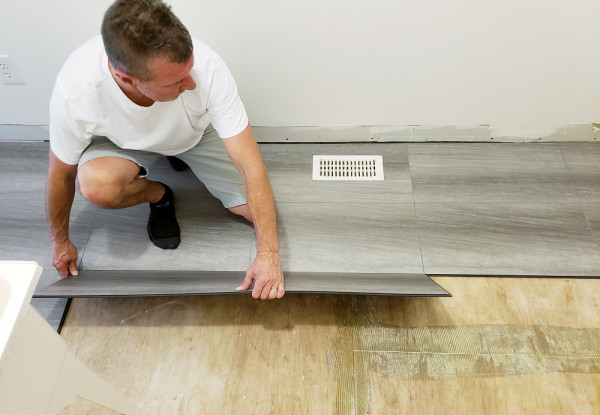A Simple Guide for Installing Hybrid Flooring

Thinks to know about hybrid flooring installation
Quite naturally, only a few people prefer to remove their old tile floor because it is time-consuming and also quite an expensive process, so can you do hybrid flooring installation over tiles?
It is common for homeowners to remain dissatisfied with the look of their home and the various materials used, especially in old homes. Your present flooring may have become outdated aesthetically, or it may have begun to show too much deterioration when usually homeowners begin to consider a few alternatives.
Is it possible to install hybrid flooring over any carpet?
Carpet, natural stone, and bricks are, unfortunately, the only floors that cannot be covered with hybrid flooring installation. The uneven nature of these materials will place additional strain on the hybrid joining system as well as additional wear on the new floor, potentially will cause buckling and cracking once installed.
Ripping up the carpets or covering up bricks to make preparation for hybrid floor laying may mean more work for you, but it is an important step for long-lasting flooring.
However, if your home already has vinyl, plywood, concrete, or tiles, floorboards, then hybrid flooring can be installed directly on top. Remember that laying new flooring over the existing flooring may add extra height to your floor, so ensure that you have sufficient space under the doors before starting your hybrid flooring installation.
The following steps will be followed for installation of hybrid floors:
-
Assess the space
Before hybrid flooring installation, it is necessary to properly survey the space. Take the measurements of the floor and then evaluate the number of planks that you will need. Check whether the floor has moisture to plan for a certain barrier. Now decide how you will lay out a new floor.
-
Prepare the subfloor
After the initial planning, you must prepare the floor by cleaning all paints, dirt, oils present on the existing floor. Remove all the furniture and other items. Check the level of your floor and make sure that there must be less than a 3 mm difference in levels within 2 meters.
-
Prepare the underlay
Most hybrid flooring does not require underlayment. But for some brands, it will be necessary to install a certain underlay before installing hybrid floors. This will make the floor more comfortable to your feet and also minimize any noise while you will walk over the floor.
-
Lay the hybrid planks
It is recommended that you start from left to right in your first row. Make sure that equal space is provided between them and also, they maintain a uniform distance from the wall. The first row should be done very carefully as the rest of the row will follow that.
If there is any gap noticed then later it can be filled with either transition strips or mouldings.
-
Connect the rows together
After you have finished the first three rows, use a string line for checking the straightness. In case they are not perfectly straight, the first row of planks may need to be re-trimmed for accounting for any wall irregularities. This is possible without having to disassemble the existing rows.
After the floors are installed, you must regularly clean and maintain them.
Conclusion
Remember The best practice is to follow the manufacture installation manual or hire a qualified floor installer.
You can find a list of flooring brands and manufacturers here
or hire a professional floor installer here
